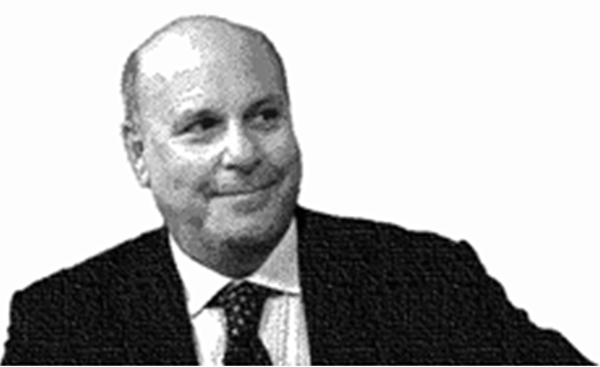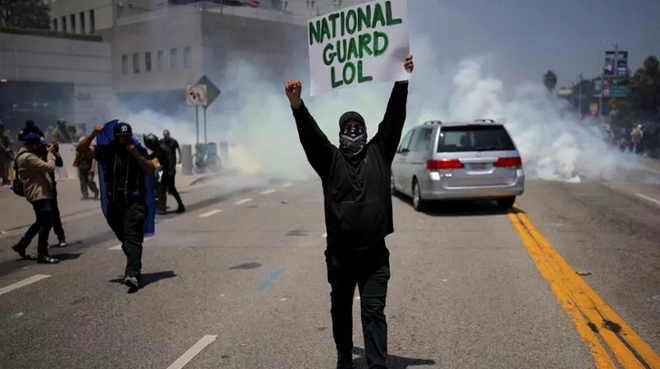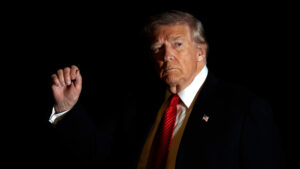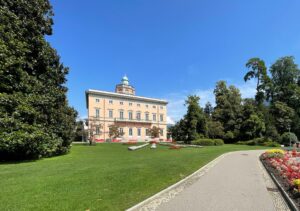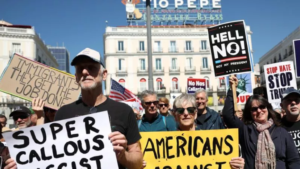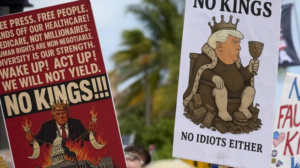A president who sends the National Guard to quash local protests in Los Angeles is not acting like a man who believes in democracy.
By Alan Friedman
Yet that is precisely what Donald Trump has done—deploying federal troops, despite protests from state officials. A Secretary of Defense who threatens to send the Marines into U.S. cities is even more alarming. The U.S. military is not designed to suppress peaceful citizens exercising their First Amendment rights.
Trump’s actions amount to a show of force in his controversial campaign to deport 11 million undocumented laborers. They also represent an escalation in his political battle against California, a Democratic stronghold governed by Gavin Newsom—a charismatic and media-savvy politician who could well be the Democratic nominee for the White House in 2028. What is unfolding is not simply a law enforcement issue, but a deeply political campaign dressed up in the language of public order and backed by the intentional misuse of the American military.
The deployment of troops against civilians to enforce immigration policy reflects a disturbing authoritarian shift. Just ask the former Chairman of the Joint Chiefs of Staff, General Mark Milley. On June 1, 2020, in a scene now infamous in U.S. political history, federal forces violently cleared peaceful protesters from Lafayette Square in Washington, D.C., using tear gas, rubber bullets, and mounted patrols. The goal: to clear the way for then-President Trump to stage a photo op with a Bible in front of St. John’s Episcopal Church. Milley, wearing combat fatigues, was seen walking alongside Trump in what many interpreted as a show of military support for the president’s crackdown on civil dissent. The backlash was swift—and Milley soon expressed deep regret. In a speech to the National Defense University on June 11, 2020, Milley apologized, saying: “I should not have been there. My presence in that moment and in that environment created a perception of the military involved in domestic politics.”
It should be noted that Trump refused to call in the National Guard on January 6, 2021, on the day that he incited an insurrection against the U.S. government. The contrast is revealing. On that day, as rioters smashed windows and stormed the U.S. Capitol, Capitol Police Chief Steven Sund, Washington, D.C. Mayor Muriel Bowser, House Speaker Nancy Pelosi, Senate Leader Chuck Schumer, and even Vice President Mike Pence called for National Guard support. Trump did nothing. He resisted and delayed the deployment for hours, effectively enabling the violence.
But on Saturday, Trump did not hesitate. He called in the National Guard—a reserve military force normally under the control of state governors. The National Guard can be federalized under certain laws, allowing the president to override the state’s authority in exceptional circumstances, such as insurrection or rebellion. However, such federalization is rare and highly controversial, precisely because it can be weaponized politically, as Trump appears to have done.
Trump’s actions are actually illegal.
What is happening in America is that increasingly Donald Trump is showing his true colors as a would-be autocrat. His actions in California are part of a larger strategy to punish political enemies and consolidate control. Trump despises Gavin Newsom for multiple reasons: Newsom represents progressive, liberal America; he governs a state that challenges Trump on environmental and immigration issues; and he is seen as a rising star in the Democratic Party. Trump has threatened to withhold billions in federal aid to California, despite the fact that California pays more in federal taxes than it receives—essentially subsidizing Republican-led states.
Donald Trump’s latest gambit began last Friday, with a wave of ICE raids—by which is meant Immigration and Customs Enforcement, a component of the Department of Homeland Security—storming into stores and offices across Los Angeles County, arresting undocumented workers. These are not clandestini, as the Italian term term might suggest; they are long-term residents—some living here 10, 15, even 20 years—working at jobs, paying their taxes, and raising families.
For many decades, undocumented workers in lowly paid jobs have quietly built America’s service economy: dishwashers, toilet cleaners, waiters, fruit pickers, store clerks, factory hands. But Trump has now branded them criminals, despite their deep integration in every community. The latest ICE raids and troop deployment are not only a brutal gesture—they cross a perilous threshold: using federal military power to suppress protest against executive policy.
This is no longer about immigration enforcement; it is a symbolic crackdown designed to showcase power and intimidate dissent.
By Saturday protests had engulfed downtown Los Angeles, Compton, and Paramount. Demonstrators set fires, erected barricades, chanted “No human being is illegal,” and held signs proclaiming solidarity. A car was torched. The protest became multicultural in tone, uniting undocumented workers, students, clergy, unions and everyday Angelenos.
Late on Saturday Trump signed an Executive Order deploying 2,000 National Guard troops to Los Angeles, taking military command over state guards, and justifying it as necessary to suppress a so-called “rebellion against the authority of the Government of the United States.” Defense Secretary Pete Hegseth telegraphed even greater force, warning that if unrest continued, active duty Marines from Camp Pendleton would be “on high alert” and could be deployed.
California’s Governor, Gavin Newsom, branded the move “purposefully inflammatory” and “deranged”—saying there was no unmet need for law enforcement, and that troop deployment was “only to create a spectacle.” Newsom was correct. This is all part of one of Trump’s reality show scripts, except that the victims were tax-paying working-class Hispanic-American workers.
A U.S. president must command respect for constitutional norms. Instead, Trump has deployed domestic military forces, arrested judges and legal advocates, bullied academic institutions like Harvard, attacked the LGTBQ community, and he is now overtly suppressing democratic protest and dissent.
When the state turns military upon its citizens, a “low density civil war”—sporadic, urban, harrowing—becomes conceivable. The fabric of American democracy, frayed by distrust, could rupture in coming months. The country risks a slow-burning conflict, where skirmishes and uprisings erupt not in fields or trenches, but in city streets, supermarkets, union halls, and factories.
Has Donald Trump crossed a red line? Perhaps. Some of his critics in America went so far as to compare the Los Angeles crackdown to the Reichstag fire in Berlin in 1933. That is an exaggeration, one assumes.
The problem with Trump in the White House is that everything is possible. The situation in a deeply divided American society today is not merely unstable—it is combustible. And the American president is a man who does not seem to believe in democratic norms and practices. He is instead a vindictive narcissist who appears to actually derive pleasure from pouring gasoline on the fire.

